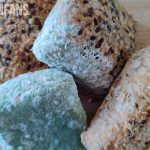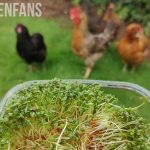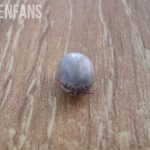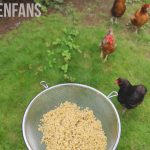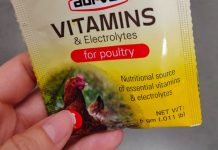Can Roosters Eat Layer Feed?
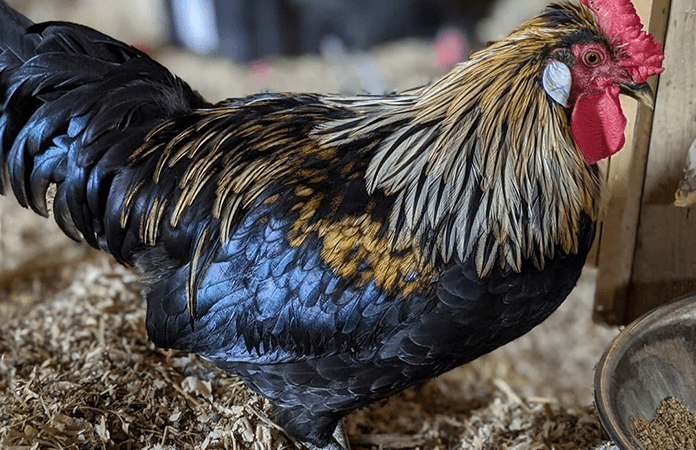
Chicken Fans is reader-supported. When you buy through our links, we may earn a commission. Learn more about our privacy policy and disclaimer.
The answer to this question is not a simple yes or no. Layer feed isn’t toxic to roosters; they won’t get sick from eating layer feed. But this type of chicken feed isn’t ideal for roosters as they have other nutritional needs than laying hens.
Let’s address all possible risks of feeding roosters layer feed and find out what they should eat instead.
Is it OK for roosters to eat layer feed?
Yes, they can eat layer feed, but it is not the best feed for them. However, they won’t develop health issues from eating layer feed occasionally. Roosters are very different from laying hens and need less calcium and more protein.
Feeding roosters laying feed will not give them the nutrients they deserve and need to keep them happy and healthy.
Keeping both hens and roosters in the same living environment can be pretty challenging to keep their feed separated. But if you are determined to give laying feed to your hens, you should provide a different kind of chicken feed for your roosters.
After all, he is the flock’s protector and the chicken coop’s boss, so he can use all the necessary nutrients.
Why not to feed roosters laying feed
As the name suggests, layer feed is specially made for laying hens. Meaning adult female chickens that need to produce eggs regularly. Laying feed is higher in calcium than non-laying feed, around 3-4%, and contains about 16% protein. Roosters need less calcium and more protein in their diet to keep them healthy and strong.
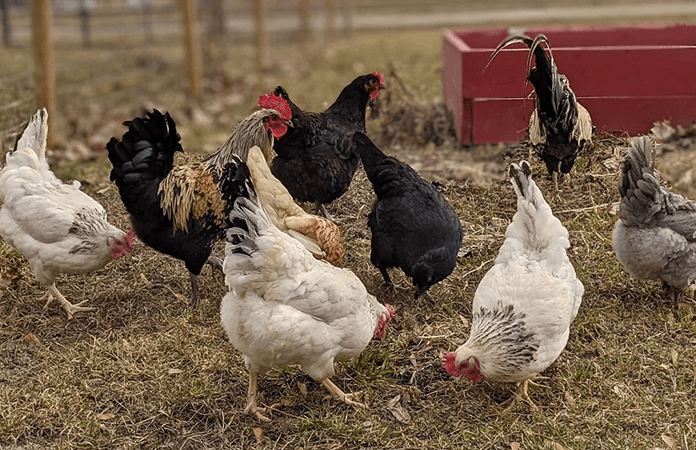
Ideally, roosters need quality chicken feed that contains 20% protein and around 1% calcium. You can find high-protein feed in the most known brands for male and female birds.
For example, the Purina flock Raiser Feed, available in pellets and crumbles, contains 20% protein and around 1% calcium, making this an excellent rooster food source. Whether you choose pellets or crumble feed for your chickens is up to you and the taste buds of your flock! Their nutritional value is the same; they only differ in consistency and size.
You’ll need to remember that with access to plenty of fresh water and free-ranging your chickens, they don’t need to be commercially fed daily.
Especially during summer, when there are plenty of bugs and plants to eat, they’ll be scratching and foraging all day and find plenty to eat. But when keeping chickens in an enclosed pen, ensure they have plenty of high-quality feed available during the day.
What do roosters eat?
As most people only keep hens in their flock, no chicken feed is available on the market only for roosters. A flock raiser or all-flock feed is always a good choice as the feed is produced for mixed flocks and other poultry.
These types of feed are available in both pellets and crumbles. Always ensure you purchase feed for your rooster that contains 20% protein and a maximum of around 1% calcium.
Our Top 3 Rooster Feed:
- Purina Flock Raiser Crumble (minimum 20% protein, maximum 1.3% calcium)
- Homestead Harvest All Flock Feed (minimum 18% protein, maximum 1.2% calcium)
- Naturewise All Flock (minimum 20% protein, maximum 1.9% calcium)
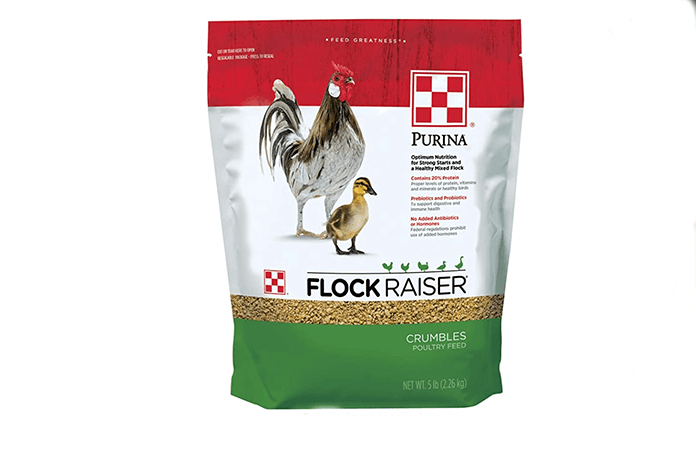
How to feed roosters and hens different feed?
Most chicken keepers have multiple hens and only one or two roosters. So it can be quite tricky to ensure the roosters won’t eat the laying feed. There are some tricks to use when feeding hens and roosters different feed.
- Give both the same feed and give extra calcium to the hens
- Keep them separated during feed time
- Place the roosters’ feed higher so hens can’t reach it
1. Give both the same feed and provide extra calcium for the hens
This is the most straightforward solution. Don’t give your hens laying feed; provide high-quality chicken feed suitable for both hens and roosters. Add oyster shells to their diet to increase their calcium intake if necessary.
Chickens will keep on laying, even if they don’t eat a daily amount of laying feed. However, egg production can slow down a bit. If this is not a problem for you, and there aren’t any problems with the eggshells, like soft-shelled eggs, giving laying feed with higher calcium levels isn’t always necessary.
If you keep calcium available for the hens, they’ll take what they need, not more, not less.
2. Keep them separated during feed time
Stating the obvious here, but keeping roosters and hens separate when feeding them is the best and simplest way to provide them with different types of chicken feed. However, this can be hard to do when going to work all day, especially when your chickens don’t free-range, as you don’t want them to be hungry.
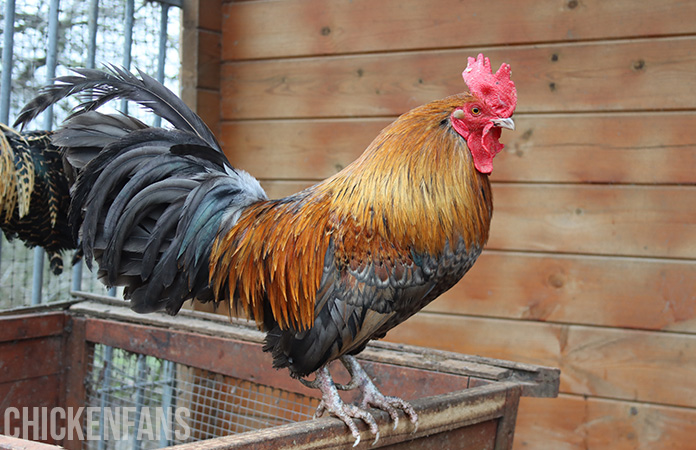
On average, you can split your chickens’ feed intake into two daily meals. But during winter, when days are short, you may not get home from work before your flock goes to bed, and they’ve missed the second feed. Keeping roosters and hens in a separate pen, but where they can still see each other, can be a solution during shorter days.
Ideally, if you’re home during the day, it’s best to split the feed into three to four small servings daily instead of one or two large feeds.
3. Place the roosters’ feed higher
When keeping both hens and roosters from the same chicken breed, the rooster will be the larger-sized chicken in most cases.
If you don’t want the hens to reach the feed you give the rooster, place the feed higher than the other chicken feed, so the hens can not reach it. This system does not work if you have Silkie roos mixed with normal-sized chickens or if not all chickens are the same breed and size.
This obviously means the rooster can still access the laying feed, but once he gets used to the idea of its own private feeder, chances are, he won’t use the hens’ feeder anymore.
Can pullets and cockerels eat the same feed?
Yes. Before reaching sexual maturity and before pullets start laying, they can eat the same chicken feed. The feed must be high quality and contain plenty of protein to help them grow and mature. Once the pullets start to lay, you can switch to laying feed with higher calcium levels.
Summary
Until they reach sexual adulthood, both male and female chickens can eat the same feed. But once hens start laying, they’ll need more calcium in their diet, while roosters won’t need as much.
That’s why most chicken keepers give laying feed to their hens, and although it’s not bad for roosters to eat laying feed, it’s not the best feed for them either. For roosters, a maximum of around 1% calcium in their feed is enough, while hens need 3-4%. They also need around 20% protein feed, while most laying feed only contains 16%.
That’s why providing ‘all flock chicken feed’ for roosters is the most suitable choice. You can even give this to your hens and add oyster shells should they need extra calcium.
Credits Featured Image: @hatchitfarms (IG)
